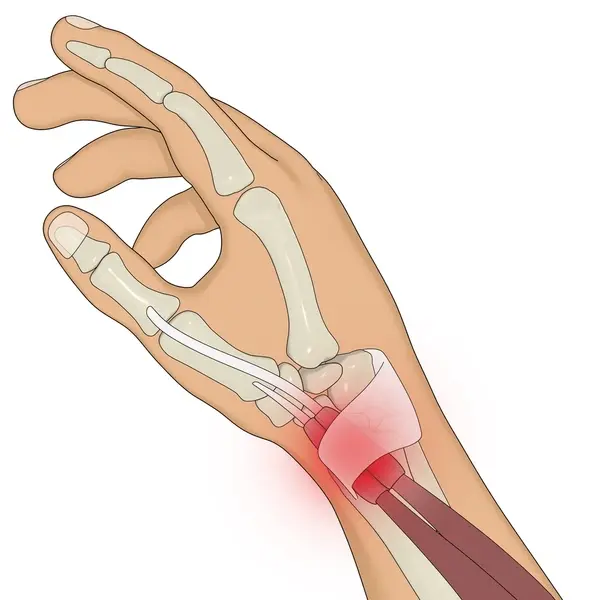De Quervain’s Tenosynovitis: What It Is, What Causes It, and How Physiotherapy Can Help.
- Nahor Garcia Jimenez
- Apr 7
- 3 min read
Updated: Aug 26

If you’ve been feeling pain or discomfort along the thumb side of your wrist—particularly when gripping, lifting, or twisting—there’s a good chance you may be experiencing De Quervain’s Tenosynovitis. This common condition can make daily activities, like opening a jar or holding your phone, unexpectedly painful.
At Seventeen Physiotherapy Clinic, we specialise in treating De Quervain’s with advanced physiotherapy techniques and innovative treatments such as TECAR therapy. Whether you're a new parent, office worker, or active in sports, we’re here to help you recover and stay pain-free.
What Is De Quervain’s Tenosynovitis?
De Quervain’s Tenosynovitis is an inflammatory condition affecting two tendons in the wrist that control thumb movement—the abductor pollicis longus (APL) and extensor pollicis brevis (EPB). These tendons pass through a fibrous tunnel at the wrist. When they become irritated or swollen, it causes pain—especially during gripping, pinching, or twisting motions.
One way to check for this condition is the Finkelstein test—if bending the wrist towards the little finger while gripping the thumb causes sharp pain, it’s a likely indicator.
What Causes It?
The most common cause of De Quervain’s is repetitive hand or wrist movement, which leads to overuse and inflammation of the tendon sheath.
Everyday triggers include:
Frequent texting or typing
Carrying a baby or heavy bags
Manual tasks like gardening, cleaning, or sewing
Trauma or sprain to the wrist
Inflammatory conditions like rheumatoid arthritis
Sports-Related Causes
De Quervain’s is also common in sports where the thumb and wrist are under constant repetitive load or forceful use. Athletes and enthusiasts in the following activities may be at risk:
Tennis and badminton (frequent wrist rotation)
Golf (tight gripping and swing motions)
Rowing and paddling sports (repetitive pulling with grip)
Weightlifting (heavy gripping of bars or kettlebells)
Climbing (forceful thumb use on grips or holds)
Overuse without proper rest, poor technique, or lack of grip strength can all contribute to tendon irritation.
Physiotherapy: A Proven Path to Recovery
At Seventeen Physiotherapy Clinic, physiotherapy is at the core of our treatment approach for De Quervain’s Tenosynovitis. It’s safe, evidence-based, and tailored to your lifestyle—whether you're lifting a baby or swinging a golf club.
Our treatment approach may include:
Manual therapy to improve joint mobility and reduce stiffness
Tailored exercises to strengthen the wrist, thumb, and forearm
Stretching techniques to relieve tension and improve flexibility
Ergonomic advice to correct posture and reduce strain
Taping or bracing (when needed) to support healing
We focus not just on recovery, but also on preventing the issue from returning.
TECAR Therapy: Advanced Technology for Faster Healing
We’re proud to offer TECAR therapy—a cutting-edge physiotherapy treatment that uses radiofrequency energy to stimulate deep tissue repair, reduce inflammation, and accelerate healing.
Benefits of TECAR therapy:
Speeds up tissue regeneration
Improves blood circulation to affected areas
Reduces swelling and pain
Supports faster return to sport and activity
It’s painless, non-invasive, and ideal for both active individuals and those looking for fast recovery.
Prevention Tips
Here’s how to reduce your risk of developing or re-aggravating De Quervain’s:
Take frequent breaks during repetitive wrist tasks
Use proper lifting techniques, especially when carrying children or weights
Warm up and stretch before and after sports
Maintain grip strength with specific strengthening exercises
Use ergonomically designed tools and sports equipment
Listen to early signs—catching it early makes all the difference
Book an Appointment at Seventeen Physiotherapy Clinic
Whether your symptoms are new or ongoing, we’re here to help. Our expert physiotherapists will assess your condition, create a personalised treatment plan, and support your full recovery—with the latest evidence-backed methods and compassionate care.
Get in touch:
📍 Seventeen Physiotherapy Clinic, Suite 3.10 17 Hanover Square. W1S 1BN
Let’s work together to get you back to moving freely—with strength, comfort, and confidence.
email: info@seventeenphysio.co.uk
References:
Akram, M., & Patil, A. (2019). De Quervain Tenosynovitis. StatPearls [Internet]. Retrieved from https://www.ncbi.nlm.nih.gov/books/NBK537321/
Harvey, F. J., Harvey, P. M., & Horsley, M. W. (1990). De Quervain’s disease: surgical or non-surgical treatment. The Journal of Hand Surgery, 15(1), 83–87.
Mardani-Kivi, M. et al. (2014). Effectiveness of physiotherapy in the treatment of De Quervain’s disease. Journal of Research in Medical Sciences, 19(2), 112–116.
Pagonis, T. A. et al. (2021). The Effect of Tecar Therapy on Musculoskeletal Disorders: A Literature Review. Journal of Physical Therapy Science, 33(7), 577–582.



Comments